- Joined
- Sep 8, 2015
- Messages
- 6,514
- Reaction score
- 6,511
Is it possible to get a picture of the growth?
I would like to play with the concept that this could be a misdiagnosis. Is seems more coincidental with the lighting rather than the catalyst.
I'll tell a little short story about my dry rock and bagged live sand experience.
Feb 1st or day that water was added.
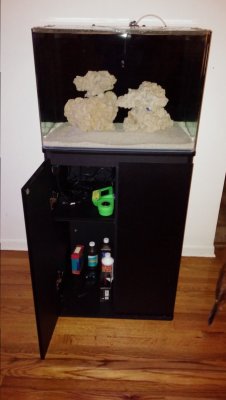
March 1st. Diatom bloom. Few coral added.
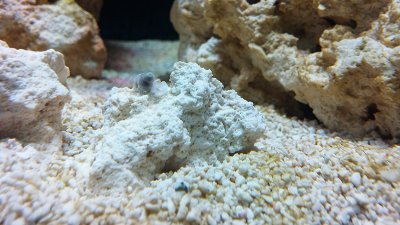
The diatom bloom lingered for a couple months. I neglected to visually document it until June and decided to take pictures for more insight as it was growing uncontrollably. But because the growth had bubbles and information was limited I went to dinoflagellate threads for help.
June misdiagnosis growth.
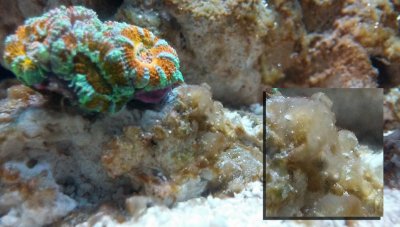
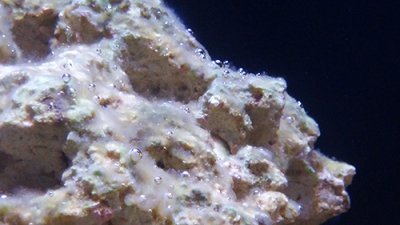
I sent a sample to a fellow reefer here named Todd Williard or commonly known as twilliard.
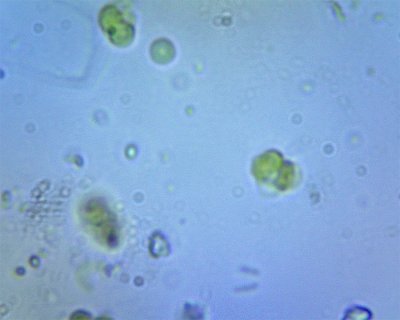
The chlorophyll presence in the sample led us to research that eventually turned into identifying as Chrysophytes.
Not much information on them but a common disturbance with this growth is large amounts of silicates and that part is the short version. Ripping my hair out with this growth brought me to an article by a well known reefer who specializes in lighting. His name is Dana Riddle ;Hilarious. His article, Aquarium Chemistry: Effects of GFO (Granular Ferric Oxide) on 'Trace' Metals Concentrations in Artificial Seawater, has the key(believe it or not) to eradicating Chrysophytes. A three day black out, with 24 hours of max GFO, and a water change will cure this growth.
However, the side effect from treatment is getting the tank back on track with maturing.
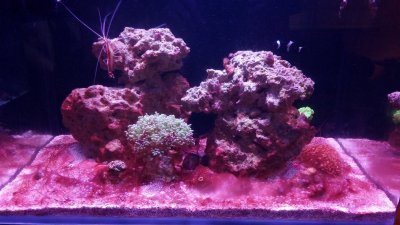
And eventually it clears up.
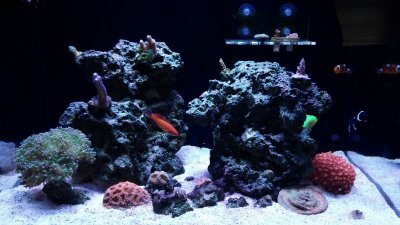
However, in my tanks history and after all these changes, the rock(picture above) in the lower left hand corner was a dense base rock with no holes or water to flow through. So I removed the rock to break it down. Come to find out, the rock won't break. The chisel just embeds and white milky stuff comes out.
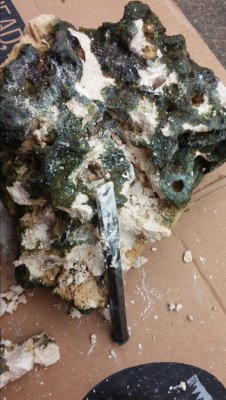
So I cured more dry rock separately in a brute can for a little longer than a month. Seeding bacteria and doing small water changes. I also soaked the rock with GFO to limit silicates and phosphates that were known to leach. About two weeks after adding the new rock to the tank. Dinoflagellates.
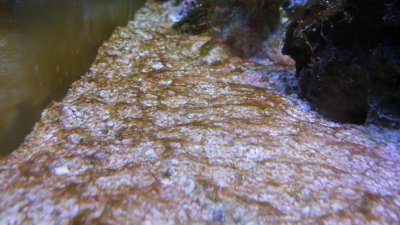
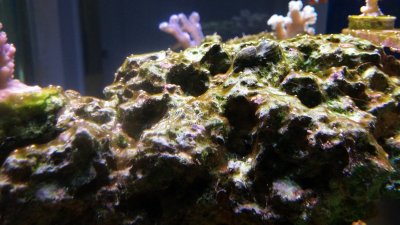
I didn't want to share the tanks entire history but this is the picture heavy short story version. I did this to not only show the worst outcomes from dry rock tanks but to make sure that something isn't getting misidentified.

I would like to play with the concept that this could be a misdiagnosis. Is seems more coincidental with the lighting rather than the catalyst.
I'll tell a little short story about my dry rock and bagged live sand experience.
Feb 1st or day that water was added.

March 1st. Diatom bloom. Few coral added.

The diatom bloom lingered for a couple months. I neglected to visually document it until June and decided to take pictures for more insight as it was growing uncontrollably. But because the growth had bubbles and information was limited I went to dinoflagellate threads for help.
June misdiagnosis growth.


I sent a sample to a fellow reefer here named Todd Williard or commonly known as twilliard.

The chlorophyll presence in the sample led us to research that eventually turned into identifying as Chrysophytes.
Not much information on them but a common disturbance with this growth is large amounts of silicates and that part is the short version. Ripping my hair out with this growth brought me to an article by a well known reefer who specializes in lighting. His name is Dana Riddle ;Hilarious. His article, Aquarium Chemistry: Effects of GFO (Granular Ferric Oxide) on 'Trace' Metals Concentrations in Artificial Seawater, has the key(believe it or not) to eradicating Chrysophytes. A three day black out, with 24 hours of max GFO, and a water change will cure this growth.
However, the side effect from treatment is getting the tank back on track with maturing.

And eventually it clears up.

However, in my tanks history and after all these changes, the rock(picture above) in the lower left hand corner was a dense base rock with no holes or water to flow through. So I removed the rock to break it down. Come to find out, the rock won't break. The chisel just embeds and white milky stuff comes out.

So I cured more dry rock separately in a brute can for a little longer than a month. Seeding bacteria and doing small water changes. I also soaked the rock with GFO to limit silicates and phosphates that were known to leach. About two weeks after adding the new rock to the tank. Dinoflagellates.


I didn't want to share the tanks entire history but this is the picture heavy short story version. I did this to not only show the worst outcomes from dry rock tanks but to make sure that something isn't getting misidentified.



















